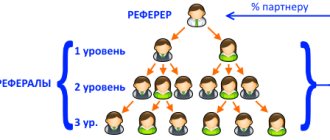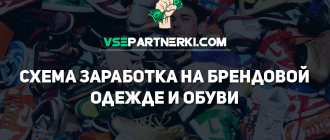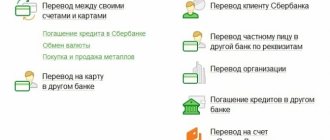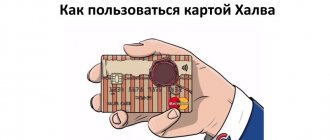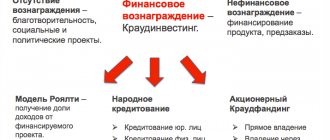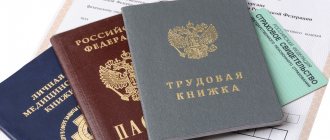Essence of the question
Almost any citizen, entrepreneur or organization, purchasing goods, work or services, becomes a payer of a special type of fiscal burden - value added tax.
This payment is a kind of markup on the actual cost of the purchased product or service. Of course, a number of goods are exempt from taxation, but their number is insignificant. Despite the fact that in reality we are all payers of value added tax, its taxpayers, according to the norms of the Tax Code of the Russian Federation, recognize only legal entities and individual entrepreneurs using the general taxation system (OSNO), legal entities and individual entrepreneurs under special regimes (USN, UTII, Unified Agricultural Tax, PNS) when performing certain types of transactions.
What does taxpayer status give? This condition gives the economic entity not only the obligations to calculate and transfer funds to the budget, but also gives the right to a VAT refund. Sometimes taxpayer status is not required for this.
Who can return VAT
Typically, tax payers - individual entrepreneurs and legal entities - receive a tax deduction. Ordinary citizens, contrary to assurances in some media and on Internet sites, do not have such a right. The Tax Code of the Russian Federation does not provide for VAT refunds for individuals on a card or in any other way, if such people are citizens of Russia. And there are no exceptions to this rule. It is impossible to return VAT to an individual’s card for money or free of charge; the Federal Tax Service of Russia simply does not provide such a service. Therefore, all the instructions on the Internet on how to return VAT to your card legally and safely are traps for gullible citizens whom scammers want to deceive. You should not transfer money to them. You will definitely not receive any real refunds in return for payments made to the budget. But there is still one way to return VAT to an individual.
How to understand that an offer comes from scammers
How to distinguish offers coming from the state from fraudulent schemes:
- you need to look for information about the mentioned government agency, law or Decree of the Government of the Russian Federation. The specified regulations simply do not exist, this can be seen even from their details; such a numbering system is not used in the Russian Federation;
- the site itself also inspires mistrust; the sites of government agencies and reputable public organizations are not designed in this way;
- You can check whether the organization indicated on the website exists by name. There is a possibility of such a search on the website of the Federal Tax Service of the Russian Federation. Needless to say, no data about her will be found;
- payment of funds by the state is made in accordance with administrative regulations, which are approved at the level of the Government of the Russian Federation, and require the recipient to provide a package of documents through the MFC, the State Services website or directly to the government authority.
Thus, if you follow the basic rules of caution, it is quite easy to recognize the actions of scammers.
How can an individual get VAT back?
Unfortunately, VAT refunds for individuals in 2020 are not provided for in the Tax Code of the Russian Federation. Russians do not have the right to return the tax paid on goods, works, services purchased on the territory of the Russian Federation. The Tax Free System of the Russian Federation is provided for (Article 169.1 of the Tax Code of the Russian Federation). This is VAT compensation to a foreign individual for goods and services purchased on the territory of the Russian Federation. But not all purchases can be tax refunded. The right to compensation arises only when purchasing goods and services specified in the list of the Tax Code of the Russian Federation. The amount of tax to be refunded is determined individually.
Therefore, before applying for a refund, check whether the purchased product is included in the list of goods on Tax free.
A special check is required to process the refund. When leaving Russia at the customs inspection point, submit your purchase and fiscal receipt for inspection. The customs officer will check compliance and place a stamp on the receipt confirming the goods have left the country. After this, the foreigner receives the money.
Similarly, it is allowed to refund VAT to Russian citizens who made purchases outside of Russia. They will receive the money immediately before departure, at the airport on a bank card or in cash. The basis is a receipt with a return stamp from the country where the purchases were made.
You can return the VAT tax to the card after the trip by sending the documentation by mail to the intermediary address indicated on the receipt. The third method of compensation: contact a bank that is a partner of the intermediary company.
VAT refund scheme
Let's present the VAT refund scheme in the form of step-by-step instructions. This VAT refund scheme will allow the taxpayer to monitor compliance with the tax refund procedure and, if violations are identified, will help to assert their rights.
Step 1. Submitting a declaration with the amount of VAT to be refunded.
Its desk audit is carried out by the tax inspectorate within two months, but in some cases it can be extended up to three (clause 1 of article 176, article 88 of the Tax Code of the Russian Federation).
During such an audit, tax authorities have the right to request documents confirming the use of tax deductions (clause 8 of Article 88 of the Tax Code of the Russian Federation, clause 25 of the resolution of the Plenum of the Supreme Arbitration Court of the Russian Federation dated July 30, 2013 No. 57, letter of the Federal Tax Service of Russia dated August 22, 2014 No. SA-4-7 /16692).
Read more about this check in the article “Features of a desk audit for VAT refundable.”
If the tax authorities revealed violations during the audit, then proceed to step 2.
If no violations are identified, then proceed to step 6.
Step 2. Drawing up a tax audit report by the tax authorities if violations are identified.
In this act, the tax authorities reflect the identified violations (clause 3 of Article 176 of the Tax Code of the Russian Federation, Article 100 of the Tax Code of the Russian Federation).
Step 3. Submission by the taxpayer of written objections to the identified violations.
Within one month from the date of receipt of the tax audit report, a taxpayer who does not agree with the result of the audit must submit written objections to the violations identified (clause 6 of Article 100 of the Tax Code of the Russian Federation).
Step 4. The tax authority makes a decision to hold or refuse to hold the taxpayer accountable.
Within 10 working days after receiving objections, the tax inspectorate considers the inspection materials and objections (Article 101 of the Tax Code of the Russian Federation) and makes a decision (clause 3 of Article 176 of the Tax Code of the Russian Federation) on VAT refund (in whole or in part) and a decision on attracting or refusing holding the taxpayer accountable. Tax authorities must notify the taxpayer of the decision made within 5 working days from the date of its adoption (clause 9 of Article 176 of the Tax Code of the Russian Federation).
Before making a decision on a VAT refund or offset (clauses 3 and 7 of Article 176 of the Tax Code of the Russian Federation), the tax authorities clarify the issue of the presence of arrears for VAT, federal taxes, debts for penalties and fines related to federal taxes.
If there is arrears, then proceed to step 5.
If there is no arrears, then proceed to step 7.
Step 5. Offset VAT against debt repayment if the taxpayer has arrears on VAT, federal taxes and arrears on penalties and fines.
In this case, the tax authorities independently offset the VAT to pay off the existing debt (clause 4 of Article 176 of the Tax Code of the Russian Federation). If the arrears arose during the period from the date of filing the declaration to the date of VAT refund, then penalties are not charged on it if the amount of the arrears does not exceed the amount of VAT subject to refund.
If the amount of VAT is less than the amount of arrears (fine, penalties), then the remaining debt must be repaid by the taxpayer.
If the VAT amount is greater than or equal to the amount of the arrears, then the arrears are considered repaid.
To reclaim the remaining VAT amount due for refund, proceed to step 7.
Step 6. The tax authority makes a decision on VAT refund if no violations are identified during the desk audit.
The tax authorities must make such a decision within 7 working days.
Step 7. VAT is returned to the taxpayer if he has no arrears on VAT, federal taxes and arrears on penalties and fines.
In this case, the tax authorities send an order to the OFC for a VAT refund. This is required by the provisions of paragraph. 1 clause 8 art. 176 of the Tax Code of the Russian Federation. Do not forget that in order to receive a tax refund, you must submit a corresponding application (along with your declaration or later).
Step 8. VAT is transferred to the taxpayer’s bank account within 5 business days from the receipt of the OFC order.
The OFK must notify the tax authorities about such a transfer (paragraph 2, paragraph 8, article 176 of the Tax Code of the Russian Federation).
If the VAT refund deadline is not violated, the refund procedure is considered completed.
If the VAT was returned in violation of the deadlines, then starting from the 12th day after the end date of the desk audit, interest is accrued in accordance with clause 10 of Art. 176 of the Tax Code of the Russian Federation. In this case, go to step 9.
Step 9. The taxpayer receives interest for violating the VAT refund deadline.
When interest is paid in full, the return procedure is considered completed.
If the interest has not been paid in full to the taxpayer, then within 3 working days from the date of receipt of the OFC notification, the tax authorities make a decision to transfer the remaining amount of interest (clause 11 of Article 176 of the Tax Code of the Russian Federation).
The next day, the tax authorities send an order to the OFC to pay the remaining interest (clauses 11 and 8 of Article 176 of the Tax Code of the Russian Federation).
For an example of calculating interest for late VAT refund, see the Ready-made solution from ConsultantPlus. Check your calculations and avoid mistakes.
Tax deduction for legal entities and individual entrepreneurs
When selling, the tax payer includes obligations in the cost of the goods, work, or service being sold. The rate is 10% or 20% (10/110 or 20/120, respectively) of the sales price. All taxpayers have the right to a tax deduction. It is equal to the amount of tax paid as part of the cost of goods, works, and services purchased for business activities. For example, for the purchase of materials for production.
IMPORTANT!
Individual entrepreneurs and organizations that apply special regimes, but are payers of value added tax, do not have the right to reimburse it from the budget.
Consequently, taxpayers for whom in the reporting period the amount of tax payable to the budget exceeded the amount of tax deductions have the right to a tax deduction. This most often happens during export.
An export deduction for legal entities is also possible when applying a zero tax rate. In this case, the amount payable to the budget is zero. But the company acquired materials, services, and work for the production of export goods. This means you have the right to a tax deduction. As a result, a negative difference arises between the payment to the budget and the deduction amount. This difference accounts for the return.
These conditions are provided exclusively for organizations and individual entrepreneurs.
Conditions and procedure for compensation
We outlined above in what cases VAT is refunded from the budget. Now let's figure out how to get reimbursement from the budget.
Key conditions for reimbursement:
1. An organization or individual entrepreneur uses OSNO. Let us repeat, subjects under other taxation regimes, even if they pay VAT to the budget, do not have the right to claim reimbursement of value added tax from the budget.
2. The amount of liabilities is less than the tax deduction. Please note that VAT payable is calculated not only on the cost of products sold, but also on a number of other transactions. The full list is enshrined in the Tax Code of the Russian Federation.
3. The right to compensation is documented. The taxpayer submitted all necessary documents to the Federal Tax Service:
- tax return;
- supply agreement;
- book of purchases and sales;
- invoices;
- stamped customs declarations;
- other documents.
4. An application for a VAT refund has been completed for an LLC, individual entrepreneur, non-profit organization or a taxpayer of another status.
IMPORTANT!
The return application form has been changed! Now you should fill out the form approved by order of the Federal Tax Service of Russia dated February 14, 2017 No. ММВ-7-8 / [email protected] (as amended on November 30, 2018).
Is it possible to avoid double taxation?
In some cases, when paying VAT to the budget, companies using the simplified tax system face double taxation when VAT amounts are included in sales revenue and at the same time are subject to a single “simplified” tax. For example, when the lease agreement for state property does not include VAT and the rent is transferred in the amount specified in the agreement, and the tenant pays VAT using the simplified tax system “at his own expense.” Or when the payer of the simplified tax system issues an invoice with allocated VAT, the amount of which he transfers to the budget (clause 5 of article 173 of the Tax Code of the Russian Federation).
However, from 2020, payers of the simplified tax system and unified agricultural tax who issue invoices will not have to take VAT into account in their income. Corresponding amendments to the Tax Code were introduced by Federal Law dated 04/06/15 No. 84-FZ. This law excludes from the revenue under the simplified tax system and unified agricultural tax the amounts of VAT received when issuing invoices with an allocated tax amount. The law also directly states that VAT amounts that are paid to the budget on invoices issued to customers are not included in expenses when calculating the Unified Agricultural Tax and the simplified tax system. Read more about this here.
